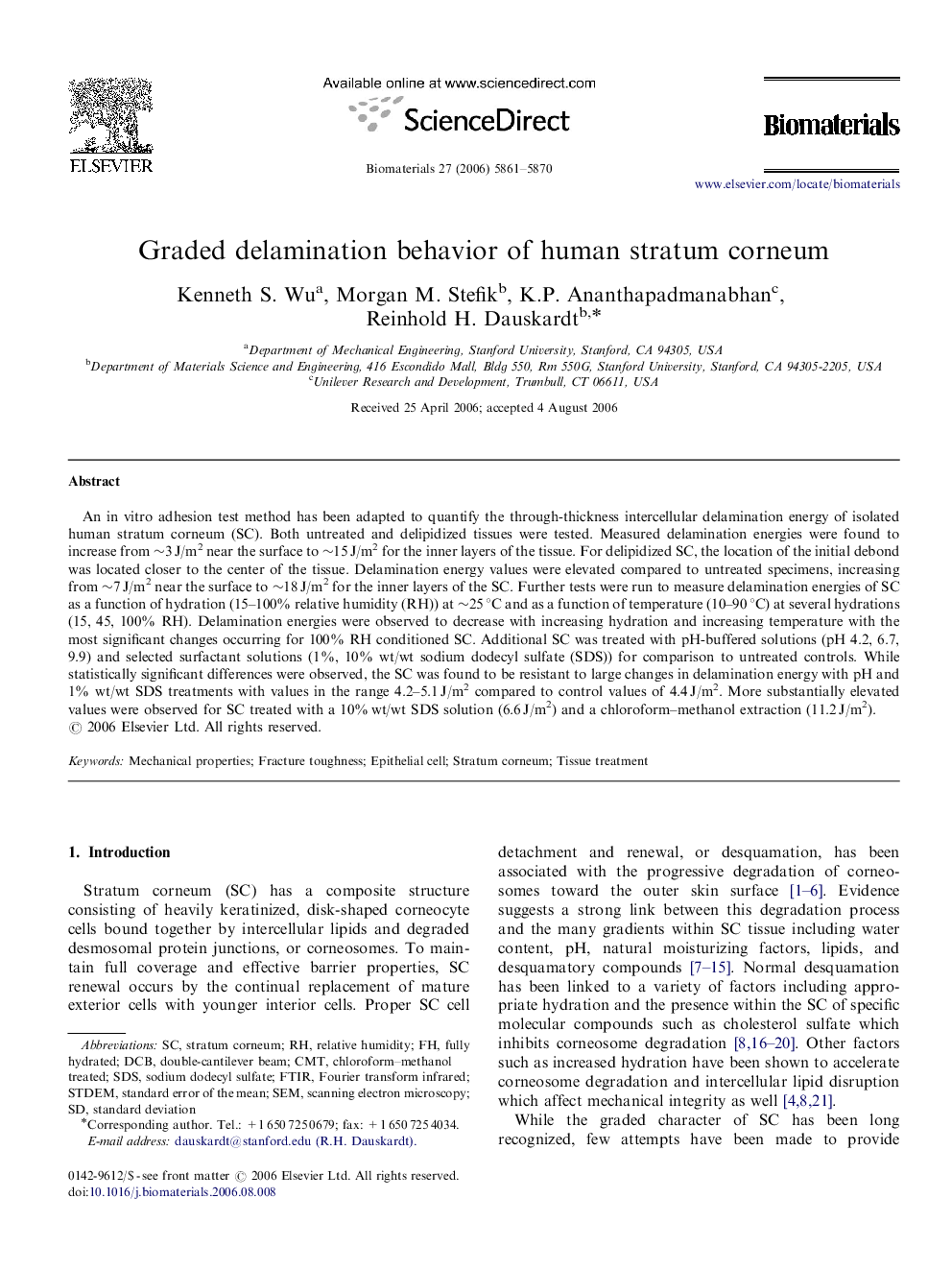| Article ID | Journal | Published Year | Pages | File Type |
|---|---|---|---|---|
| 10541 | Biomaterials | 2006 | 10 Pages |
An in vitro adhesion test method has been adapted to quantify the through-thickness intercellular delamination energy of isolated human stratum corneum (SC). Both untreated and delipidized tissues were tested. Measured delamination energies were found to increase from ∼3 J/m2 near the surface to ∼15 J/m2 for the inner layers of the tissue. For delipidized SC, the location of the initial debond was located closer to the center of the tissue. Delamination energy values were elevated compared to untreated specimens, increasing from ∼7 J/m2 near the surface to ∼18 J/m2 for the inner layers of the SC. Further tests were run to measure delamination energies of SC as a function of hydration (15–100% relative humidity (RH)) at ∼25 °C and as a function of temperature (10–90 °C) at several hydrations (15, 45, 100% RH). Delamination energies were observed to decrease with increasing hydration and increasing temperature with the most significant changes occurring for 100% RH conditioned SC. Additional SC was treated with pH-buffered solutions (pH 4.2, 6.7, 9.9) and selected surfactant solutions (1%, 10% wt/wt sodium dodecyl sulfate (SDS)) for comparison to untreated controls. While statistically significant differences were observed, the SC was found to be resistant to large changes in delamination energy with pH and 1% wt/wt SDS treatments with values in the range 4.2–5.1 J/m2 compared to control values of 4.4 J/m2. More substantially elevated values were observed for SC treated with a 10% wt/wt SDS solution (6.6 J/m2) and a chloroform–methanol extraction (11.2 J/m2).
